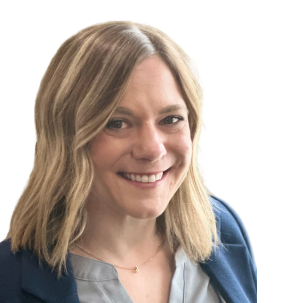Two summers ago, when I was an Executive Director at a nonprofit in Portland, OR, I agreed to participate in a weeklong cycling event where we would ride over 350 miles, climb nearly 20,000 feet and camp out in various small towns over the course of the week.
This ride was also the largest fundraiser for this nonprofit, and one that was supported by some of its most loyal and longstanding donors. For years, they had been trying to get a staff member to participate, and after some convincing, I finally committed. Here's the kicker: I had not been on a bike since I was a teenager, and I hadn’t been camping since I was a kid. What the heck was I thinking?
The training did not come without some trials and tribulations. They included falling into a ditch or two, a couple of unfinished training rides, some tears shed and knees scraped.
As a novice cyclist, that was all expected.
But what I didn't expect was to understand and practice donor stewardship in a more intentional and impactful way.
With each group training ride I showed up to, coffee and happy hour gathering I attended, and each conversation I had, the relationship between me (the Executive Director) and the donors grew.
Instead of thinking of stewardship just as a thank-you note, appreciation event, or an email from the leadership team, I learned how powerful the gift of one’s time and presence could be.
By joining these donors in an activity they enjoyed and found meaningful, they felt seen, appreciated, connected and valued – all important outcomes of a good stewardship plan. In turn, it was one of the most successful years of fundraising for that event, with many of the supporters saying it was their favorite ride.
I didn’t participate in the ride with stewardship on my mind, but seeing first-hand the impact a gift of presence can make changed the way I view stewardship.
Thank you cards and appreciation events are still important and have a place in a strong stewardship plan. But more than that, simply being aware of when you can make time to be present and give the gift of one’s self is just as important.
Not to worry, you don’t need to go hop on a bike and ride hundreds of miles to incorporate this type of stewardship into your annual plan. In fact, some of these practices are quite simple and include things like:
- Arrive engaged. Give yourself 15 minutes in between meetings to reset and regroup. This allows time to make sure you can go into the next meeting with full focus on that individual.
- Actively listen and actively observe. In a donor meeting, make it a point to take away 2-3 different details about that person. Do they like dogs? Do they have a trip coming up? What photos are hanging on their wall? How many kids did they mention they have? Then tuck those notes away and make sure to connect on it in the next interaction you have with them.
- Show up. Attend an event, happy hour or function that the donor invites you to. Are they asking you to attend a networking event with them, or sit at another nonprofit’s table at a fundraiser they are hosting? By attending something they are passionate about, you are showing you care and acknowledge them outside of a donation.
- Don’t forget the small stuff. Send a blog post that may interest them, a quick note to say “hi” or call to simply check in, just because. Did they just come back from a trip? Ping them a “I hope you had a blast on your vacation!” Did they mention a specific program they love at your nonprofit? Send them an update on it – I’m sure they’d love to hear about it and appreciate you remembered.
The best part about incorporating practices like these is that they are simple, yet impactful ways to build a transformational stewardship program for your organization, leaving donors feeling appreciated, valued and connected.

This month, DBD Group is exploring the idea of "stewardship." When and how do we say thank you to donors? How might we express gratitude in a heartfelt way that also helps to move a donor relationship forward? And how might we do it in a way that cuts through the noise and makes the mission stand out. Join us as we share ideas from our clients and team. No matter how you decide to do it, don't wait to say thanks!

